The British Shorthair is medium to large in size, the body is short
(called cobby). Legs are short and strong. Bone structure is very solid.
The head must be round, the skull is broad with a well rounded forehead.
The ears are rather small and set wide apart.
The nose is broad, straight and has a slight indentation between the eyes, but not a stop
like the Exotic.
The eyes are large and round and set wide apart. Eye colour is different on different coat
colours: Orange eyes are found in solid colours, tabbies , white, smoke, bicolour. Blue
eyes are found in white, bicolours and colourpoints (but bare in mind that the blue of a
colourpoint is genetically different from the blue in a white cat!). Green eyes are found
in black/blue silver shaded and silver tabbies.
The jaws are broad, bite is level.
The coat is short - when you hold the coat between 2 fingers the hairs should not stand
over the fingers too much - with very dense undercoat. When you touch the coat it should be
firm, it should be crispy - simply to test is to stroke the coat on the back towards the
head, if the hairs remain standing up like a comb the coat texture is correct, if not the
coat texture is incorrect. The coat is not permitted to lie flat, it must stand up (because
of the dense undercoat !).
The tail is short and thick, the tail tip is rounded.
|
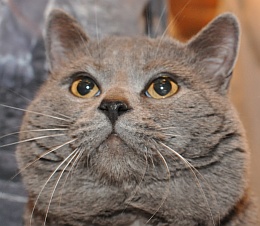
British Shorthair blue
|
|
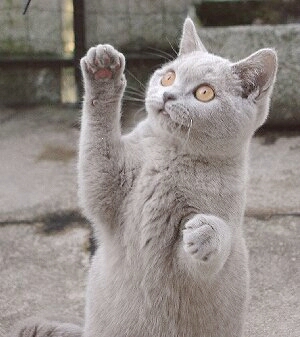
British Shorthair lilac
|
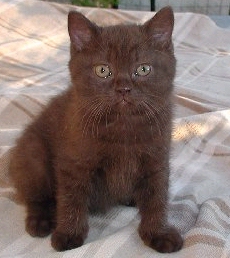 British Shorthair chocolate |
|
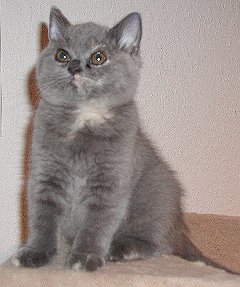
British Shorthair bluetortie (bluecream)
|
Many different colours and
patterns
There exist a lot of different colours and
patterns, almost the same colours as for Persians:
- Solid colours as black, blue, chocolate,
lilac, red and cream.
- Tortie colours as black tortie, blue tortie, chocolate tortie, lilac tortie.
- Tabby colours in all three tabby patterns (blotched, mackerel and spotted)
in all the colours mentioned above
- also with silver, then they are called
silver tabby.
- Colours with silver, as smoke, shaded and shell (chinchilla).
- Bicolour patterns, i.e. all the colours above with white.
- Colourpoints (as for the Persians)
- and also Tabby Points.
|
|
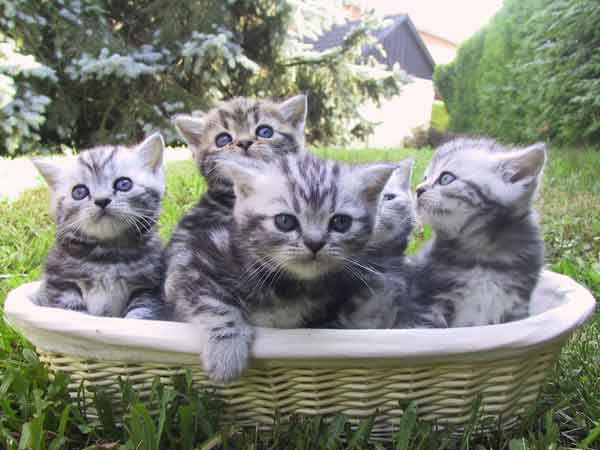
British Shorthair kittens silver tabby |
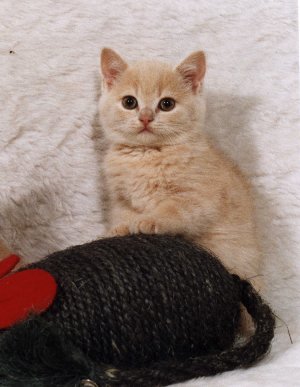
British Shorthair cream
|
|
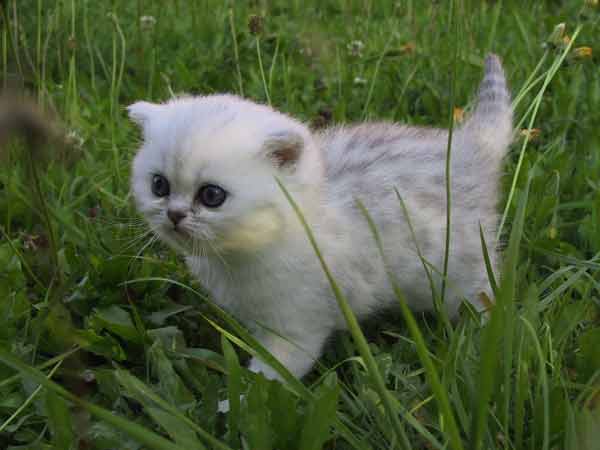
British Shorthair silver shaded |
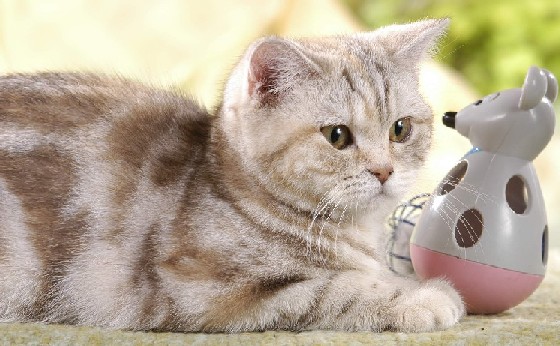
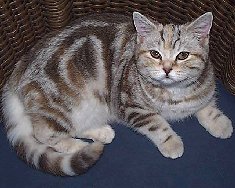
British shorthair chocolate tortie silver blotched
|
History
The British Shorthair is already mentioned in one of the first books giving a good
overview about the different breeds which was issued in Britain in 1889 and the cats were
shown in that famous show at Crystal Palace in 1871.
In the early days British Shorthair had not been separated from the European Shorthair
cats, but British breeders made a lot of efforts during the fifties to
develop a
separated standard for the British. Due to World War II the breed was decimated and
breeders made outcrosses with Persians which led to a longer and softer coat because
Persian breeders enforced the polygenes for a full and soft coat.
In our days a lot of new colours were bred like chocolate and lilac British, originating
from the Siamese, or the colourpoint British resulting from outcrosses with Exotics or
Persians. But in all cat federations it is agreed that the head of a British should
clearly differ from that of an Exotic, the nose is not permitted to show a stop and the
coat of a British is firm to touch and must be shorter than that of an Exotic. |
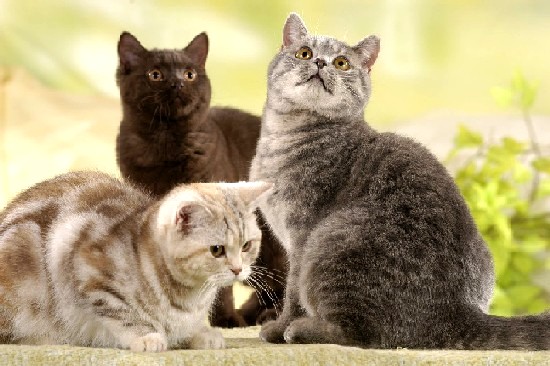
British shorthair
chocolate tortie silver tabby
chocolate
blue spotted
|
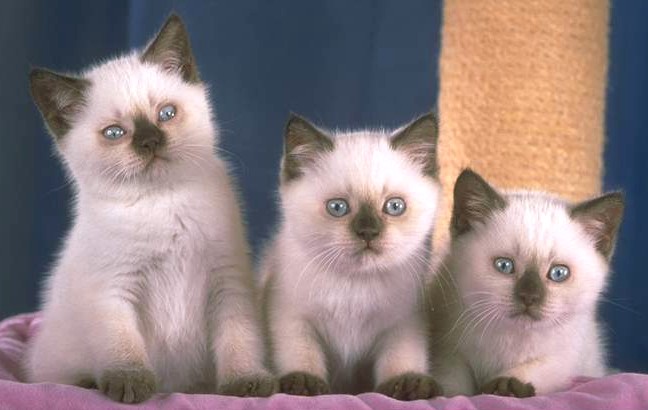
British Shorthair chocolatepoint
|
Temperament
The British Shorthair are independent, yet very affectionate to their
people. They follow them around the house to make sure that everything is
done right. Males are very people oriented. They are like little Teddy
bears, extremely quiet, rather little talking, but they still very alert and
can be sometimes quizzical. Everything is done cautiously, they are not
seriously in a hurry. They make ideal pets for less active owners as well as
for rather busy households. |
Grooming
The British Shorthair is an easy going cat, their coat does not tangle
and has no tendency to get filthy or knotted. They do not need to be bathed
or excessively groomed. Their coat should be lightly combed from time to
time to get rid of old and dead hairs. |
